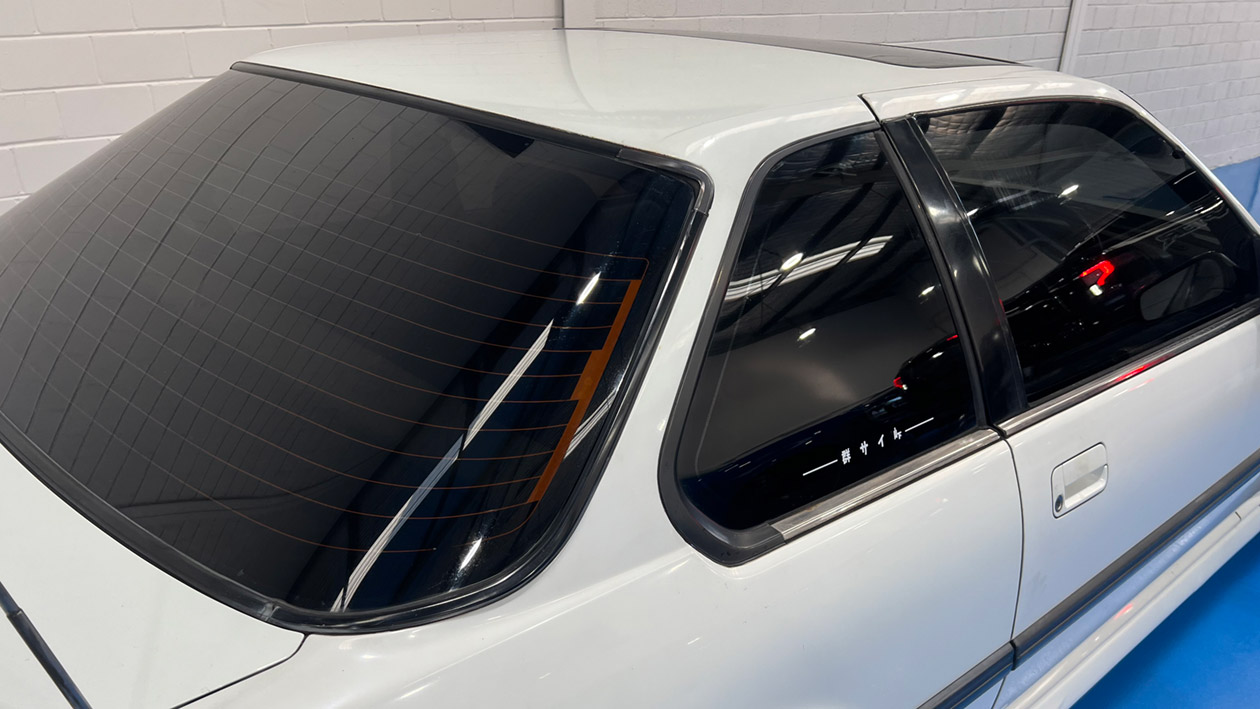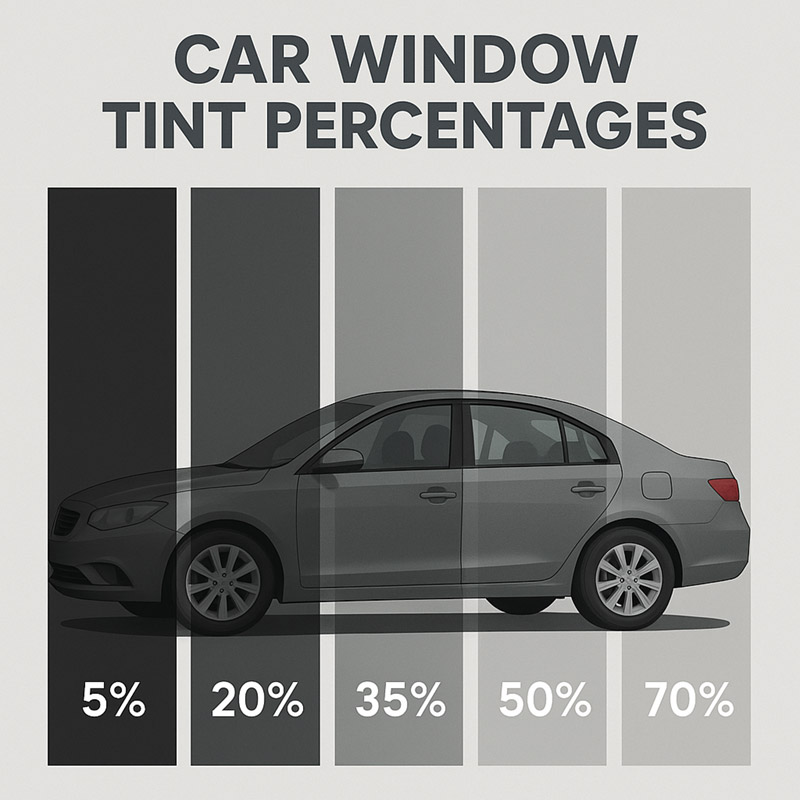
Yes, you can see out of 5% window tint during the day, but visibility is significantly reduced due to the darkness of the film. At night, it becomes much harder to see through the tint, especially in low-light conditions, which can impact safety while driving.
Before diving into the specifics, it’s important to understand that 5% refers to the visible light transmission (VLT) rate – meaning only 5% of light passes through the film while 95% is blocked. This analysis examines visibility from inside a vehicle with 5% tint under various conditions.
Understanding 5% Window Tint
5% window tint, often referred to as “limo tint” or “limo black,” represents one of the darkest tinting options available in the market. The percentage indicates that only 5% of visible light can penetrate through the treated glass, blocking an impressive 95% of the light spectrum. This ultra-dark appearance is why it’s commonly associated with limousines and high-security vehicles.
The VLT (Visible Light Transmission) percentage is a critical measurement in window tinting. The lower the percentage, the darker the tint and the less light it allows to pass through. At 5% VLT, you’re looking at one of the most light-restrictive options available to consumers.
Daytime Visibility Through 5% Tint
During daylight hours, you can generally see through 5% window tint from the inside of the vehicle, though with some notable limitations:
- You can see outside in daylight conditions, but the view is altered
- Colours appear subdued and less brilliant when looking through the tint
- The intensity of sunlight appears significantly reduced
- Objects and surroundings remain visible but with reduced clarity
One important factor is that 5% tint doesn’t make the windows completely opaque. David Hajgato, professional window tinting expert at EverClear Window Tinting says, “Dont’t forget, there is still 5% light coming through, so while it’s harder to see through you can definitely still see silhouettes and movements”. This confirms that visibility exists, though it’s undoubtedly compromised compared to lighter tint options or untinted glass.
Nighttime Visibility Concerns
The situation changes dramatically after dark. In particular:
- Nighttime visibility is substantially reduced with 5% tint
- The 95% light blockage creates challenging viewing conditions in low-light environments
- Clear glass or very light tinting is always recommended for windows critical to driver visibility
- Driving with 5% tint at night requires extra caution due to impaired visibility
While you can technically still see through the windows at night, the visibility reduction may create safety concerns. Many experts recommend against using such dark tint on front windows specifically because of these nighttime visibility issues.

Factors Affecting Visibility Through 5% Tint
Several factors can influence how well you can see through 5% window tint:
Type of Tinting Film
The composition of the tint film impacts visibility quality:
- Ceramic tints may offer slightly improved clarity compared to dyed or metallic tints of the same VLT percentage
- Different materials (dye-based, metallic, or ceramic) can affect how light passes through the film
- Higher quality films may provide better optical clarity even at low VLT percentages
Lighting Conditions
The contrast between interior and exterior lighting dramatically affects visibility:
- When interior lights are on at night, visibility through tinted windows from the inside can be further reduced
- Sunny conditions provide better visibility than overcast days or nighttime
- The angle of sunlight can affect how well you can see through tinted windows
Practical Considerations for 5% Tint
For those considering 5% window tint, several practical aspects should be considered:
Legal Restrictions
Before installing 5% tint, check local regulations:
- Many states prohibit very dark tints, especially on front side windows and windshields
- Legal limits vary by state, with some being more restrictive than others
- Even if legal in your state, driving to other states with stricter tint laws could result in tickets
Is 5% window tint legal in New South Wales?
No, 5% window tint is not legal in New South Wales (NSW) for standard passenger vehicles. The legal limits for window tint in NSW are as follows:
- Front side windows: Must have a minimum of 35% Visible Light Transmission (VLT), meaning they cannot block more than 65% of light.
- Rear side windows and rear windshield: Must have a minimum of 20% VLT, meaning they cannot block more than 80% of light.
The only exceptions where 5% tint may be allowed are for certain commercial vehicles designed to carry goods, where darker tints are permitted on rear windows to protect cargo. For standard vehicles, using 5% tint would violate NSW regulations and could result in fines or other penalties.
Safety Considerations
The reduced visibility has safety implications:
- Limited visibility may impact driving safety, particularly at night or in low-light conditions
- Some drivers compensate by only applying very dark tint to rear windows while keeping front windows with a lighter tint
- The safety compromise should be weighed against the desired aesthetic and privacy benefits
In summary, yes, you can see out of 5% window tint, but with significant limitations. During daylight hours, visibility is adequate, though colors appear subdued and details may be less clear. At night, visibility is substantially reduced, creating safety concerns, particularly for front windows essential to driving.
Installing 5% window tint should carefully balance the desired privacy and aesthetic benefits against practical visibility needs and legal requirements. For many vehicle owners, a compromise might be using 5% tint on rear windows while opting for a lighter tint (20-35%) on front windows to maintain better visibility where it matters most for safe driving.

